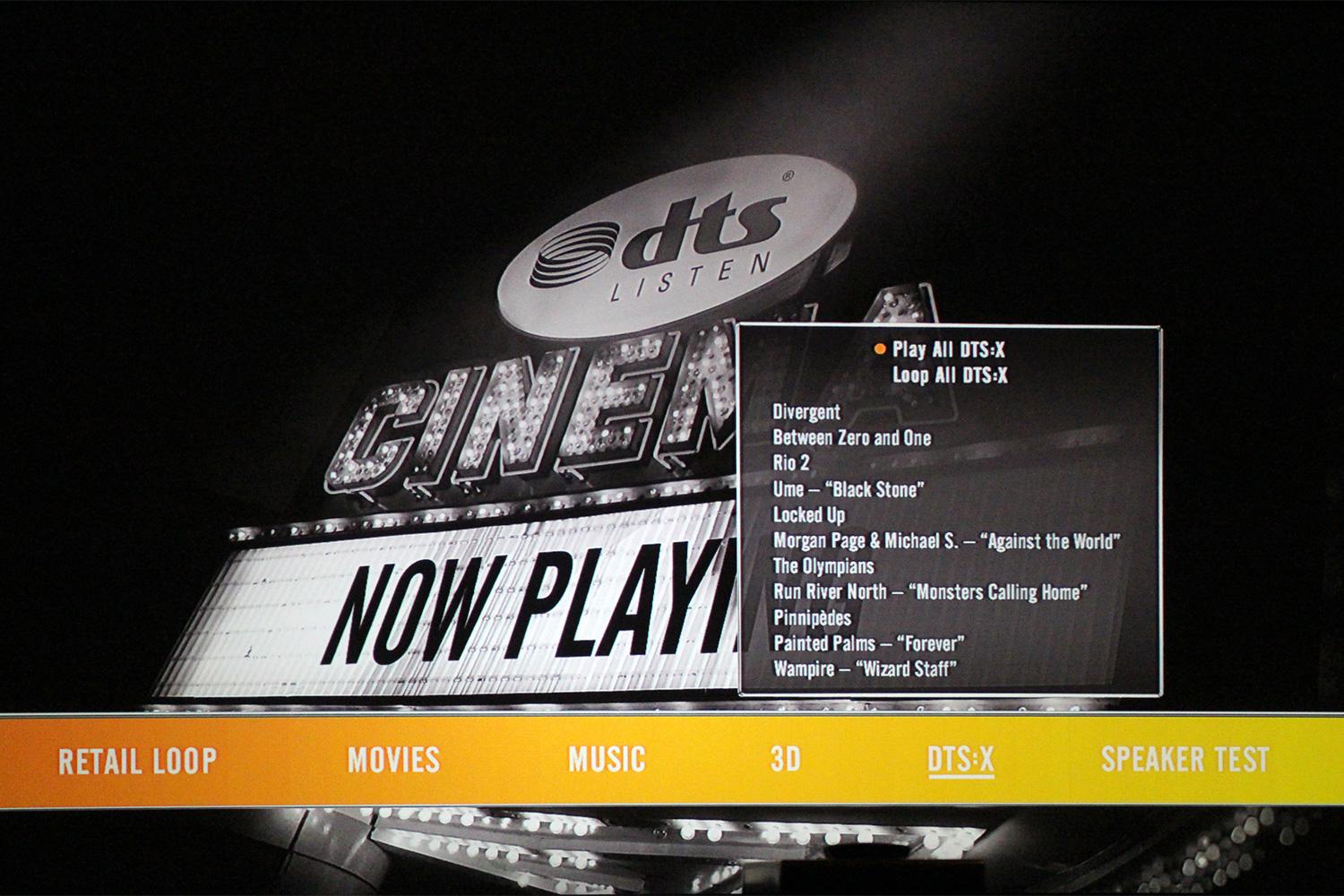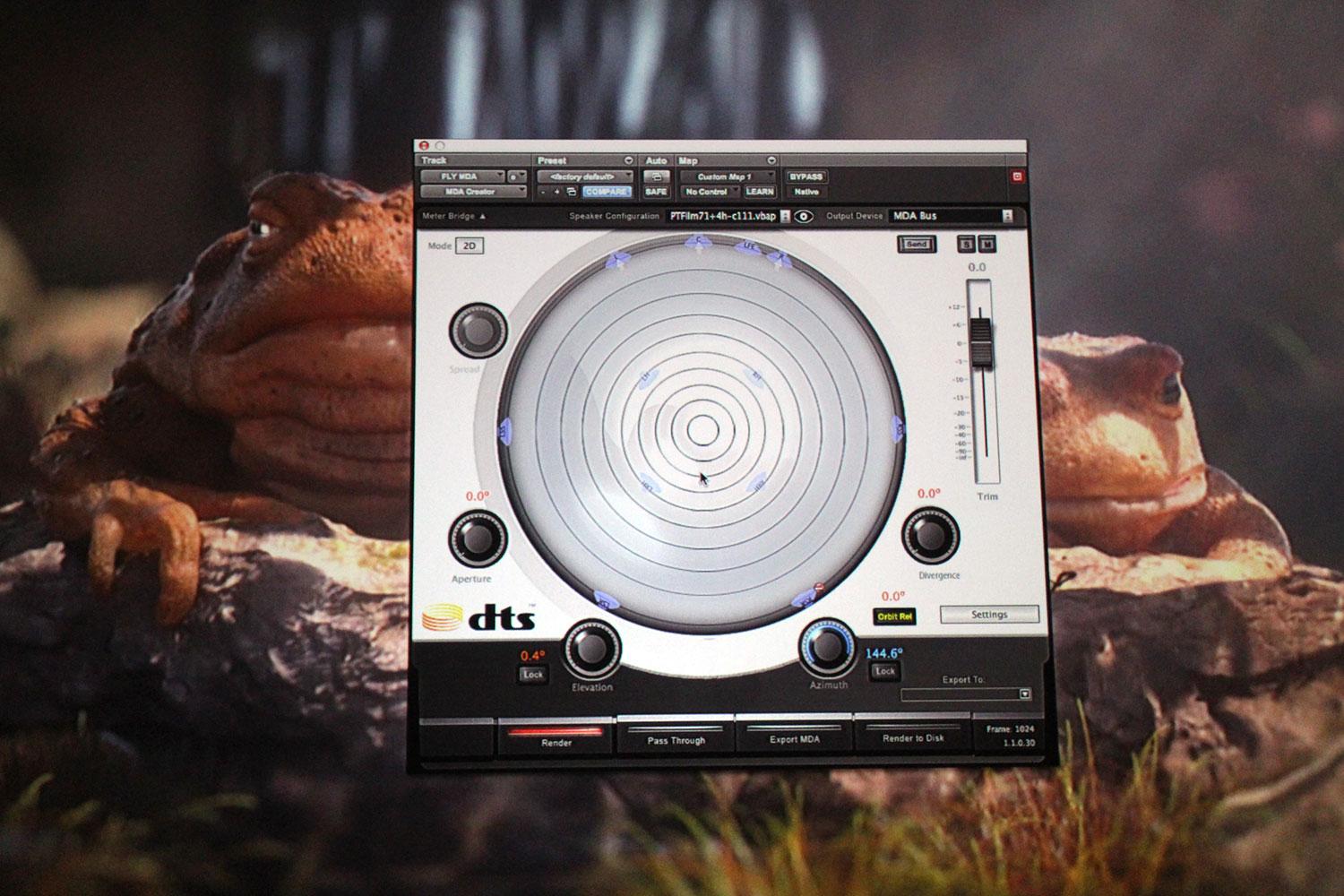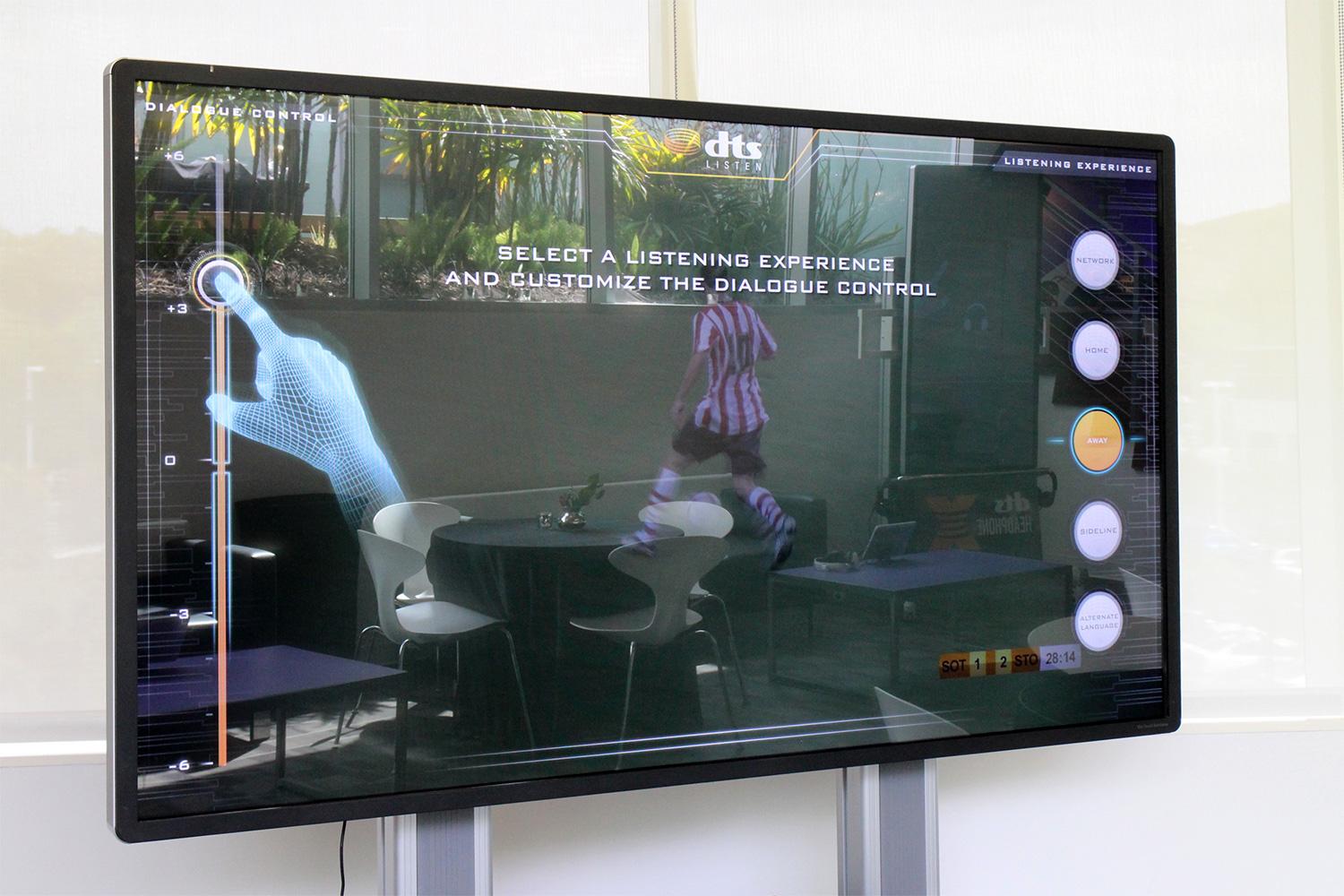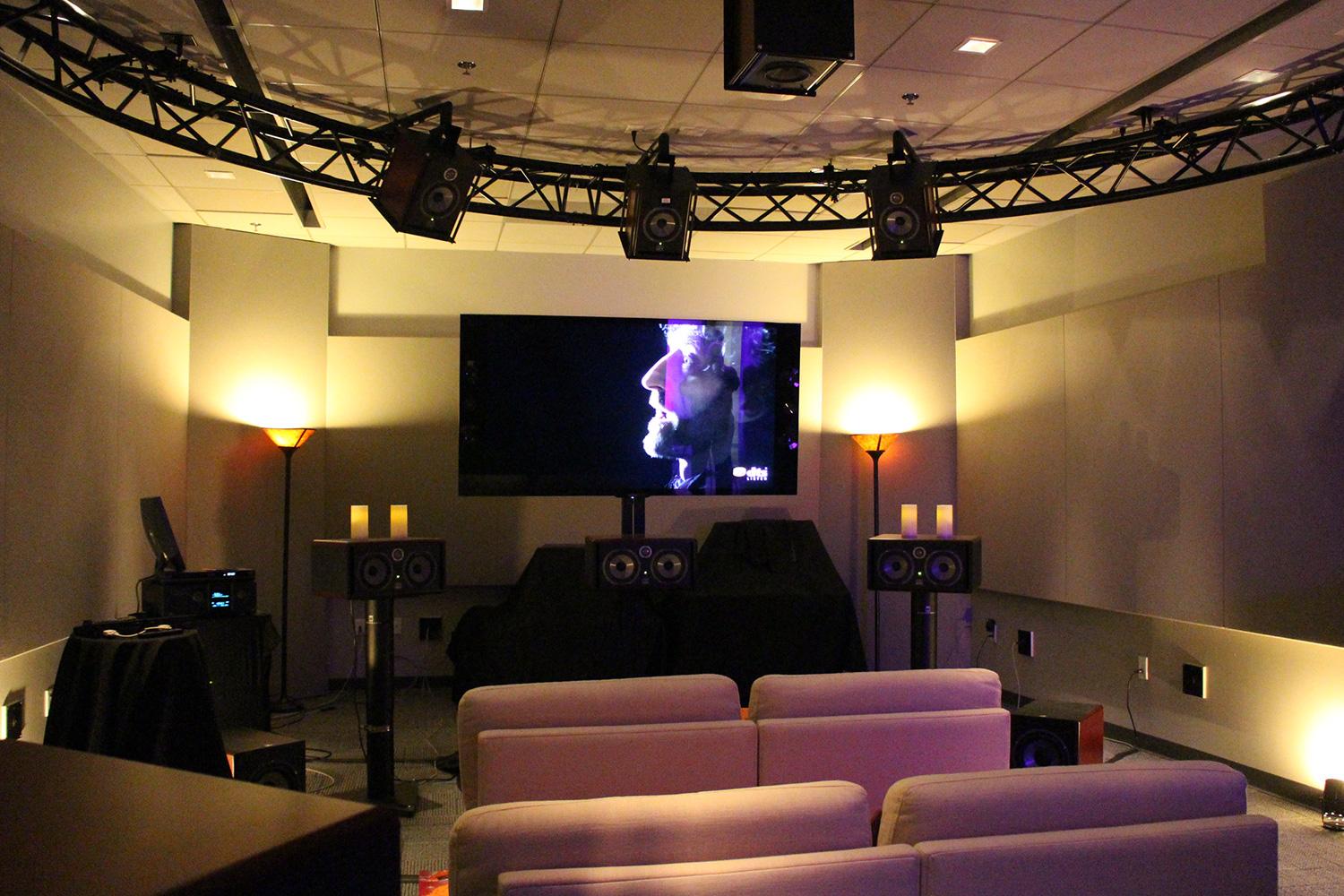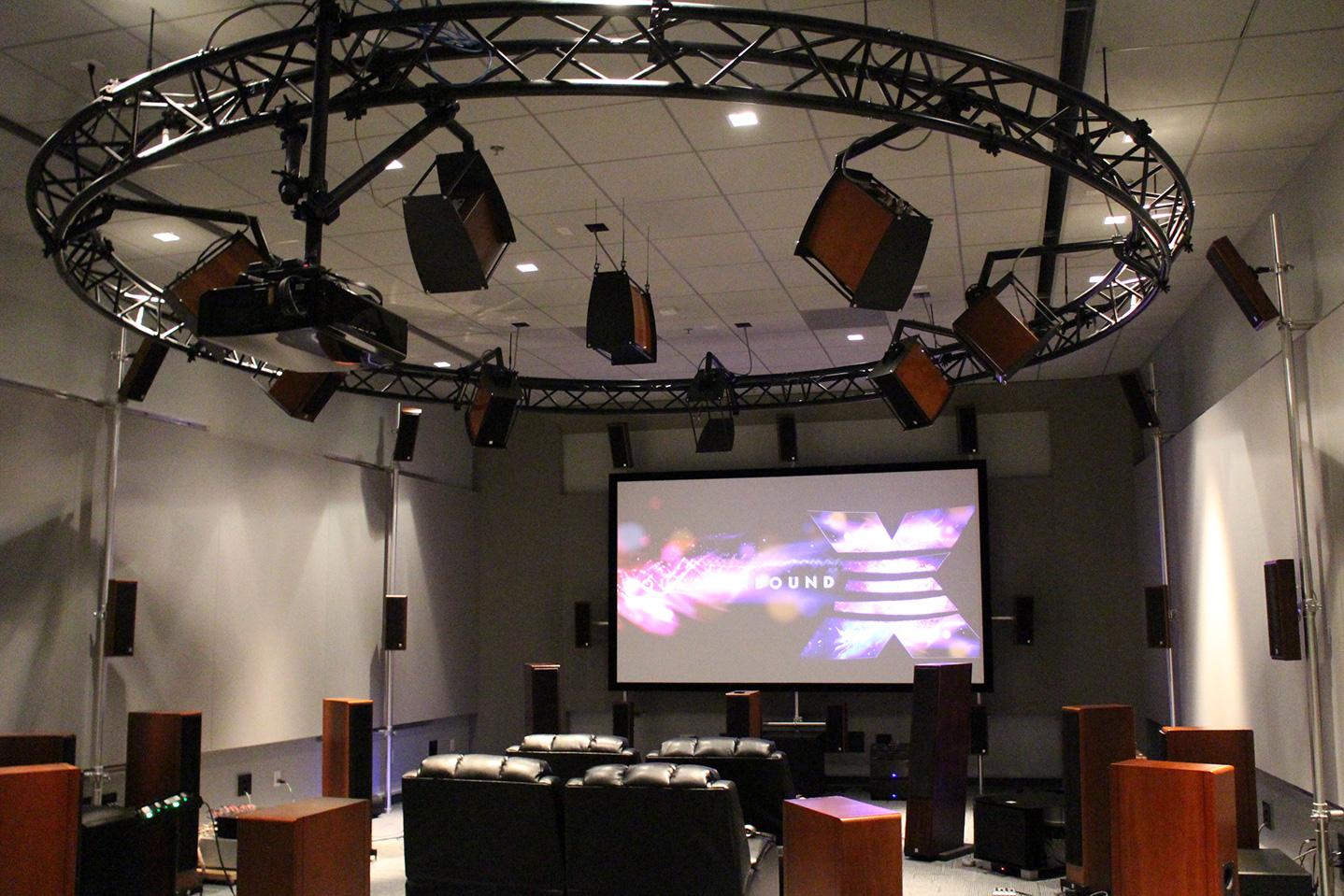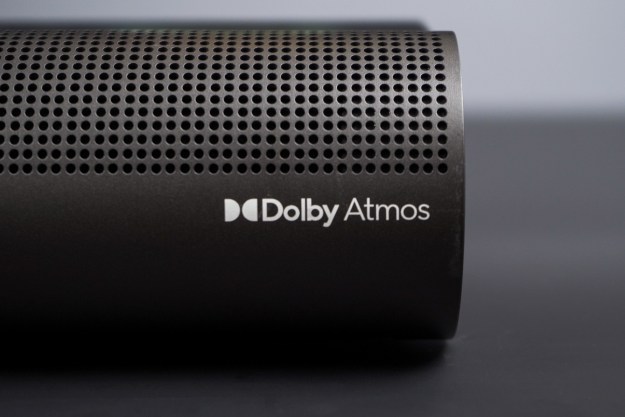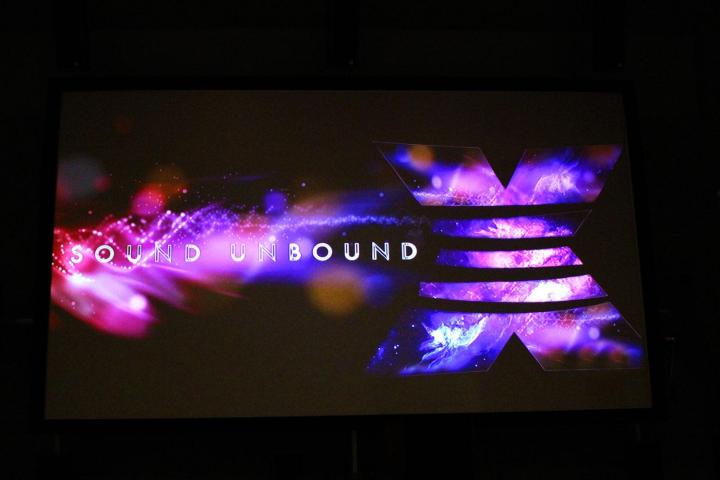
Dolby Laboratories led the charge into this new era of surround sound awesome with Dolby Atmos, a system which improves on the surround sound of yore by liberating so-called “sound objects” from the confines of strictly prescribed channels, allowing them to zip around a room unfettered, moving from one speaker to the next seamlessly — and that includes an array of new speakers placed above listeners.
Now DTS is introducing its take on the future of surround sound, and while it also embraces this new “object-based” surround sound approach, DTS’ system is very different. Introducing DTS:X, an open-architecture system that the company says is easy to integrate, more flexible than the competition, and freely available to any content creators who want to use it.
We visited DTS headquarters in Calabasas, CA, for a first-hand encounter with DTS:X, and we walked away genuinely impressed. Here’s what you need to know about the next big thing in surround sound.
DTS:X — the basics
Like Dolby Atmos, DTS:X is a surround sound solution for both commercial theaters and home theaters. The system allows for individual sound objects — such as a helicopter, or a buzzing fly — to move freely throughout a hemispheric sonic space, constrained only by the imagination of the sound mixer. DTS is hoping to make its new system more accessible than Dolby’s Atmos, however, by making it easy to use with the hardware that’s already installed in theaters and homes, and by offering the tools to mix movies in DTS:X to movie studios for free. That’s right: it will cost movie studios nothing to make the move to this new format.
“DTS:X is built on the foundation of providing an open, adaptable solution for content creators, cinemas and homes to fulfill our goal of bringing immersive audio to as many people around the world as possible,” said Jon Kirchner, chairman and CEO of DTS, Inc. That goal starts with MDA, DTS’ free software tool that allows audio engineers to navigate any chosen recorded sound throughout a 3-dimensional soundstage. The company is hoping to make MDA a standard mixing tool, and will work closely with theaters to license its new technology, along with industry insiders.
DTS:X is set up for lossless streaming, with high fidelity sample rates of up to 96kHz for the “objects” that can be rendered throughout the surround soundstage, and the hardware is fully backwards compatible with DTS-HD Master Audio mixes in stereo and standard surround sound at up to 192kHz.
In the theater
For movie theaters, DTS:X’s ability to expand surround sound is virtually limitless — tied down primarily by the price of adding more speakers and amplifiers. And while retrofitting a standard theater can start to get costly, DTS claims the system can easily be retrofitted to work with any theater that’s already been upgraded to handle Atmos for around $5,000-$6,000. Shortly after launch, Carmike also announced the franchise will begin to install DTS:X into select theaters here in the U.S., starting with 7 flagships in the Southern U.S., California, Illinois, and Colorado.
At home
For the home, DTS:X will be scaled down a bit, just like Atmos. For now, the system will support up to 11 speakers and two subwoofers. However — and this is a big deal for home theater owners, DTS:X can accommodate up to 32 different speaker locations, meaning the system can maximize the surround experience, no matter where you have to put your speakers. The system will work with nearly any speakers you might already have, possibly even Dolby Atmos-enabled speakers, which reflect sound off of the ceiling by firing upward from the ground so users don’t have to install overhead speakers.
As for receivers, DTS:X will initially land in Denon’s AVR-X7200, and Marantz’s AV8802 through firmware upgrades expected sometime this summer. The new system will also be implemented in upcoming receivers from the likes of Yamaha, Onkyo, Pioneer, and several others slated to land this year and next. While the system is designed to work for multiple mediums, including broadcast TV and streaming video, it will debut in the home on Blu-ray disc, just like Dolby Atmos — are you starting to see a pattern here? Unfortunately, we likely won’t get DTS:X and
The beauty of object-based surround sound
So why is DTS:X’s object-based system so much better than traditional surround sound systems? The company outlines three major benefits: height, flexibility, and interactivity.
DTS:X is brand new, and it will take some time before we will be able to enjoy it.
Height is perhaps the number one reason to go big with object-based surround sound, because overhead speakers not only allow for more options, they also allow for incredible immersion in the sonic experience. In our demo, we were put in a room surrounded by dozens of individually controlled Viena Acoustics Waltz speakers, including multiple overhead mounts, and shot into space via a specially created 8-minute short film. Like similar experiences with Atmos, the dazzling spherical immersion was breathtaking, detaching the audience from all distractions as we were enveloped in the dimensional dome of earth shaking, encompassing sound.
As for flexibility, sure, the 28 high-end Vienna Acoustics speakers powered by Ayre Acoustics amplifiers at use in the demo offered one of the most impressive cinematic sound experiences this writer has come across, but the benefit of such a mix is that it conforms to whatever configuration you happen to employ. The same mix that was created for our demo could be used in a room with double the speakers, or half that. DTS claims its “speaker remapping engine” can support nearly any speaker configuration “within a hemispherical layout,” optimizing your surround system, however you choose to create it. DTS Chief Marketing officer Kevin Doohan calls it “whatever.1.” In addition, the “objects” in the mix can be pulled out and altered at will, according to DTS. Anything mixed using the MDA tool is available to be moved through the mix autonomously later on.
And then there’s the cool interactive features, which the system will expand upon over time. The first likely to roll out for DTS:X in the home will be dialog control, something DTS says listeners have been clamoring for. The idea is, you’ll be able to alter the dialog loudness independently instead of, say, the entire center speaker. That will allow for listeners who are hard of hearing, or those watching late at night, to carve out the bombastic effects and soundtrack of a movie or TV show mixed with DTS:X. Taking things further, DTS imagines you might be able to control things like which announcer you hear in a sports cast, or turn up or down the crowd — of course, such features will depend on the cooperation of the broadcasters and content creators, and may have copyright issues to deal with. But the potential benefits are obvious.
Roll out
DTS:X is brand new, and it will take some time before we will be able to enjoy it. Like the company’s Headphone:X virtual surround sound system, DTS:X will be adopted slowly as movie studios and manufacturers of speakers, receivers, and software rendering devices come on board. But that’s part of the plan. DTS wanted to get its new system in place, and in the hands of content creators before UHD Blu-ray hits later this year.
However, while a large roll-out is still a ways off, the root of DTS:X, the MDA rendering software, has already made its way into Hollywood sound stages. As we were wrapping things up in Calabasa, we found out that the sound engineers behind the highly anticipated Marvel flick, Avengers: Age of Ultron, will use the new software tool to help render the surround sound mixes for the movie’s release in IMAX. And while that system won’t technically be DTS:X, it is a good sign that DTS has come up with a helpful tool that Hollywood has already taken to, which should be a boon to DTS:X as it rolls out.
The future
Looking ahead, DTS has big plans for its new system, including the adoption of DTS:X for streaming content from services like Netflix, and creating a new age of interactive sound for broadcast TV content. The system is expected to be compatible with future streaming devices as well.
DTS:X must now catch up with Dolby Atmos, which is already available on many A/V receivers and embedded in several Blu-ray discs. And, in fact, the same day DTS:X was revealed AMC announced a new plan to expand Dolby Atmos into at least 100 theaters over the next 10 years. Still, for the consumer, all of this is good news. As two of the top companies in cinematic sound compete for our ears (and Hollywood’s favor) we get to experience a striking new revolution in object-based surround sound, both in theaters and at home. And that means, no matter where we watch, immersing ourselves even deeper in our favorite means of escapism will soon be that much easier.
Editors' Recommendations
- DTS:X finally gets major streaming support starting with Disney+
- The ultimate guide to Dolby Atmos: what it is and how to get the best possible sound
- DTS Play-Fi wireless audio adds support for Dolby Atmos, DTS:X
- What is MPEG-H? The burgeoning 3D audio standard explained
- Sonos soundbars are getting DTS Digital 5.1 surround support
